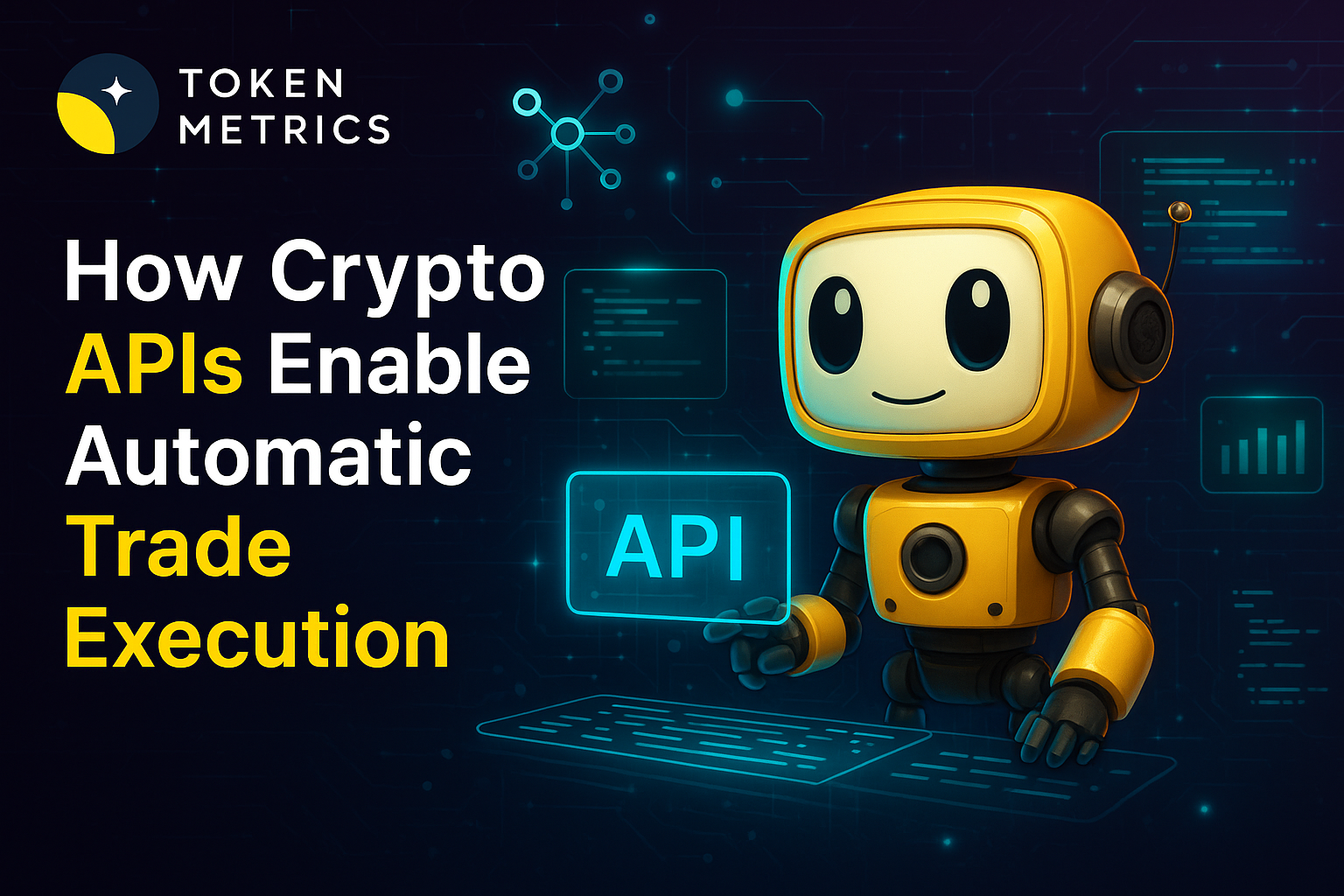How to Build Crypto Trading Dashboard Using the Token Metrics Crypto Data API on Dune
.png)
In today’s fast-paced crypto world, real-time data isn’t a luxury—it’s a necessity. For traders, analysts, and developers, being able to access live, actionable insights can mean the difference between profit and loss. That’s why the integration of the Token Metrics Crypto Data API with Dune is a game-changer for anyone seeking to create live dashboards backed by intelligent trading data.
In this post, we’ll walk through how to use this top crypto API to build dynamic dashboards on Dune. Whether you’re tracking bullish signals, backtesting trading strategies, or identifying top-performing tokens, this integration makes it possible—without any paid license.
Let’s dive into how you can use the best free crypto API available today to transform your trading.
What Is the Token Metrics Crypto Data API?
The Token Metrics Crypto Data API is a developer-focused gateway to powerful, AI-driven crypto data. It’s one of the top crypto APIs in 2025, giving you access to:
- Real-time and historical trading signals
- Proprietary trader and investor grades
- Alpha metrics comparing trading vs. holding performance
- Bullish and bearish token flags
This API is used by both professional quant traders and beginners seeking to automate insights. And the best part? Token Metrics provides free crypto API access to selected datasets, allowing you to create powerful dashboards without spending a dime.
Why Dune + Token Metrics API = Power Tools for Traders
Dune is a blockchain analytics platform that allows you to write SQL queries and create dashboards using on-chain and off-chain data. Now that Token Metrics datasets are available on Dune, you can combine the best of both worlds:
- Free access to high-signal proprietary metrics
- Real-time data visualizations via Dune’s drag-and-drop dashboard builder
- Actionable insights based on AI-driven trading intelligence
This integration unlocks a whole new level of transparency and utility for crypto analysts, portfolio managers, and DeFi enthusiasts.
Getting Started: Accessing Token Metrics Data on Dune
To begin, create a free Dune account. Once logged in, navigate to the Token Metrics datasets. These are publicly accessible and updated regularly. You’ll find tables for:
- trading_signals
- trader_grades
- investors_grades
- tokens
Start a new SQL query and choose the dataset you want to explore. Here’s what you’ll find in the trading signals table:

Step-by-Step: Creating an Actionable Dashboard with Token Metrics Data
1. Query the Trading Signal Returns
Write a SQL query to calculate the average return of trading vs. holding strategies. For example:

This gives you the alpha—how much better the Token Metrics strategy performs compared to just HODLing.
In one real example, the average signal return across all tokens was 1630%, while holding returned just 400%. That’s a 12X improvement powered by this top crypto API.
2. Identify Top-Performing Tokens
Now let’s list tokens with the highest average alpha:

Tokens like BTC, ETH, BNB, and even newer ones like Virtuals stand out due to exceptional alpha performance.
3. Visualize Trader Grades vs. Alpha
The trader grade is a proprietary score from Token Metrics that predicts how favorable a token is for short-term traders.
Use a scatter plot to correlate trader grades with average alpha:
- X-axis: Trader Grade
- Y-axis: Average Alpha
- Group by: Token Symbol
This helps you visually determine which tokens score high and offer exceptional returns—an essential tool for making actionable trading decisions.
4. Track the Latest Bullish Signals
Want to know which tokens are bullish right now? Here’s a query to find the most recent tokens flagged as bullish:

For example, on July 4th, tokens like BNB, XRP, and BTC were among the most recent bullish signals—perfect for immediate trade setups.
5. Build and Share Your Dashboard
Once you’ve run your queries:
- Click “Add Visualization” in Dune
- Choose from chart types (bar, scatter, progress bar, etc.)
- Customize colors and filters
- Combine multiple charts into a single dashboard
Your final product will be a real-time dashboard powered by the best crypto API, delivering insights that you—and your team—can act on instantly.
Why Token Metrics Is the Best Free Crypto API for Traders
Here’s why Token Metrics stands out among other APIs:
✅ AI-Driven Signals
Most APIs deliver raw data. Token Metrics provides curated signals, generated from machine learning models trained on market cycles, indicators, and price action.
✅ Proprietary Metrics
Access unique indicators like trader grade and investor grade, unavailable anywhere else.
✅ Real Historical Alpha
Use the API to backtest strategies. In the example shown, the AI strategy outperformed the market by over 1000X for some tokens.
✅ Seamless Integration
Whether you're using Dune, Zapier, OpenAI, or Eliza OS, Token Metrics is easy to integrate and query—making it the top crypto API for developers and analysts alike.
Final Thoughts
The combination of Token Metrics’ intelligent data and Dune’s visualization tools puts immense power in your hands. Whether you’re tracking market trends, building bots, or guiding portfolio decisions, this integration gives you everything you need to trade smarter.
With free access to real-time trading signals, alpha comparisons, and powerful visualizations, Token Metrics proves why it's the best crypto API for today’s data-driven investor.
Ready to try it out?
👉 Explore the Free Crypto API
👉 Start Building on Dune
Create Your Free Token Metrics Account

.png)




%201.svg)
%201.svg)


%201.svg)










.svg)




.png)